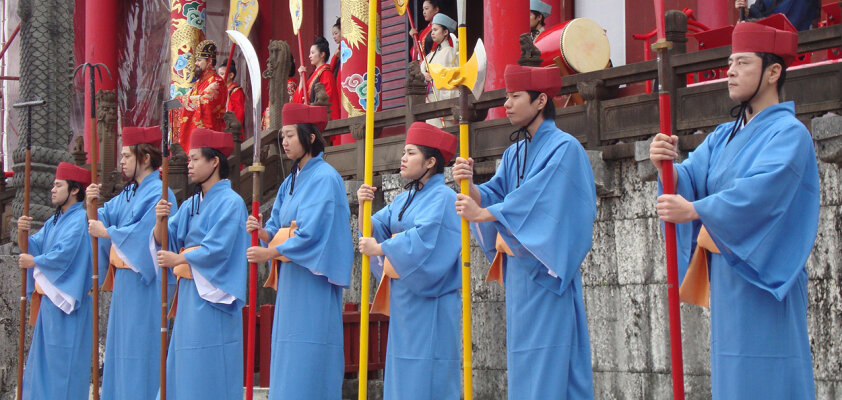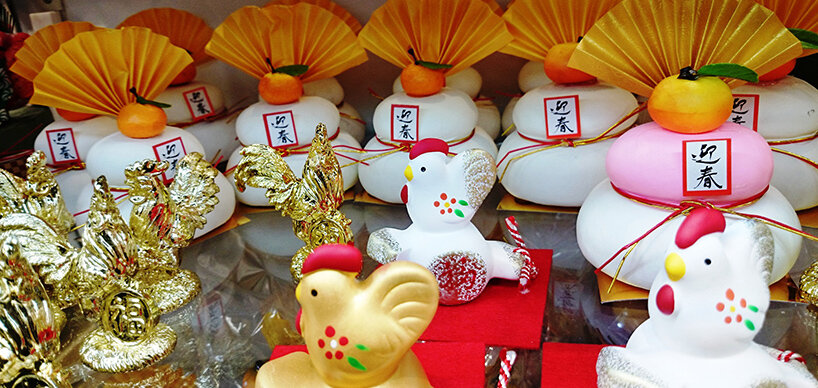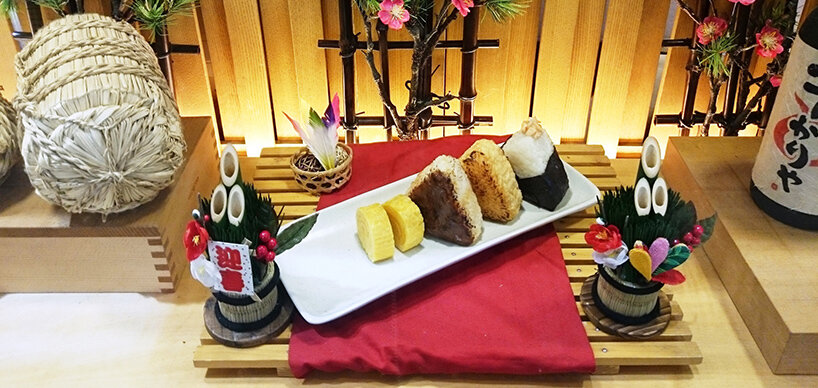Japanese New Year: Oshogatsu

Akemashite omedetou – Happy New Year! While Christmas is the biggest winter celebration for us, Japan prepares for its own significant event in December: The Japanese New Year. With traditional dishes, symbolic decorations, and colorful festivities, Japan welcomes the new year.
New Year's Eve in Japan - three days with the family
Loud parties and New Year's Eve fireworks are not found in Japan on December 31st. Instead, Japanese people visit a nearby shrine or temple at midnight to pray for a healthy and successful new year. The first three days of the year are holidays for most, providing an opportunity to spend time with family and friends.
To make the most of this time, Japanese people enjoy playing games. One of the most popular is Karuta: An ancient card game where the goal is to match recited poem cards with corresponding picture or text cards. The first person to have the most pairs wins. It is more complex than it sounds, as seen in the nationally held Karuta championships.
In the game Fukuwarai, players blindfolded try to place eyes, mouth, nose, and ears on a face. This leads to funny results, and guests are often humorously compared to the distorted face. Hence, the name means "lucky laugh." Sugoroku is a board game similar to "Sorry!," while Hanetsuki functions similarly to badminton: Using elaborately decorated wooden paddles, the shuttlecock must be kept in the air for as long as possible.
Entertaining start to the new year
Something many Japanese people have been enjoying on New Year's Eve for 65 years is the NHK television show Kohaku Uta Gassen ("Red and White Song Battle"). In this show, two teams of popular Japanese singers – the red female team and the white male team – compete against each other. The jury, consisting of celebrities, selects the winning team. Additionally, New Year's celebrations in Japan are often musically accompanied, especially with Beethoven's Ninth Symphony. A long tradition has been established where the piece is played nationwide by various ensembles. Since German prisoners of war introduced it to Japan during World War I, the famous symphony has become a part of New Year's celebrations.
Adding to the festive atmosphere of the Japanese New Year are drinking parties held with friends and colleagues around the turn of the year. At the end of December, the last gathering of the year in bars and restaurants is called Bonenkai. The parties organized in January to welcome the new year are called Shinnenkai.
A slightly different gift
Children can look forward to the Japanese New Year's festival as they receive a special gift called Otoshidama, a monetary gift, from their parents, relatives, family friends, and neighbors. The amount depends on the relationship and age of the child, with an average of 5000 Yen in the envelope, and older children may receive more. For toddlers, it's common to receive toys instead of money. The tradition of receiving Otoshidama doesn't necessarily end with graduation, as about half of all students continue to receive Otoshidama.
On the other hand, adults receive New Year's cards: Nengajo. These cards are available in almost every store in December and are usually decorated with the Chinese zodiac sign for the upcoming year. Nengajo are sent not only to loved ones but also to distant relatives, friends, acquaintances, colleagues, supervisors, teachers, and doctors – basically everyone you know. Some Japanese individuals may write hundreds of them. Unlike Oseibo, winter gifts, sending Nengajo is no longer obligatory nowadays. Many people only send them to a select few important individuals. To ensure the postcards arrive on January 1st, the postal service even hires more staff during this period, especially students working part-time jobs there.
Traditional feast - Osechi
The Japanese New Year's meal, with its various variations and meanings, is typically served in lacquered boxes called Jubako. For example, fish wrapped in seaweed, Kobumaki, symbolizes joy and happiness – as the Japanese word for seaweed, Konbu, sounds like Yorokobu, meaning "to be joyful." Lotus roots, with their many holes, represent a clear view into the future, and shrimp symbolize a long life because their curved shape and antennae resemble an elderly person. Soba, Japanese buckwheat noodles, are popular in Japan not only on December 31st. However, this dish is traditionally the last meal of the year and is called Toshikoshi. Besides its symbolism – long noodles for a long life – it also means less work: Soba is quick and easy to cook and has a long shelf life, which is especially appreciated by housewives during the New Year's rush. Additionally, in Japan, it's traditional not to use fire on New Year's Eve, so the dishes are often prepared in the days leading up to it. By the way, if you haven't finished your noodles before midnight, it is said that you will have less luck in the new year. Another essential dish to ring in the new year is Mochi – Japanese rice cakes, often with a sweet filling. While they are usually produced by machines, Oshogatsu-Mochi is traditionally handmade. They can be found in soups, desserts, and decorations. The soup is called Ozoni and is based on miso with fish broth (Dashi), Mochi, and root vegetables. On the other hand, Ozenzai contains Mochi and red Azuki beans.

Japanese store with New Year decorations and cakes (mochi)
Kagami-Mochi ("Mirror Rice Cakes") are traditional Japanese New Year decorations consisting of a small Mochi sitting on a larger one. On top of them, a small bitter orange with the Japanese name Daidai is placed. This can also be replaced by a mandarin.
The two rice cakes represent the old and new year, originating from Shintoism. The "mirror" in the name refers to the resemblance to ancient copper mirrors that represent the Shinto deities, Kami. Kagami-Mochi is placed in different locations in the house, symbolizing different Kami. For those who prefer not to make their own Kagami-Mochi, they are available in most stores long before Oshogatsu.
On January 11th, the Mochi can finally be eaten. However, they should not be cut, as this symbolizes the severing of the family bond. Instead, they are broken with hands or a hammer (Kagami Biraki). They can be grilled, roasted, or used in various delicious soups.
Everything that brings happiness
In Shintoism, it is believed that during this time, the so-called Toshigami, New Year deities, visit the house. They are welcomed at the front door or Shinto shrine with Kadomatsu, three shoots of bamboo, pine, or Ume (plum tree) cut to varying lengths and arranged on a straw base, similar to Ikebana. The name literally means "gate-pine," and the three shoots each represent prosperity, stability, and a long life. Kagami-Mochi, too, is an offering to the Toshigami and the origin of the Otoshidama money gifts to children. This is evident in the name: Otoshidama comes from Toshigami-sama, the respectful term for the New Year gods.

On the other hand, in Buddhist temples, the new year is ushered in with 108 bell tolls – one for each worldly passion in Buddhism that one seeks to overcome. In some temples, visitors can ring the bell themselves for good luck in the new year. Equally important is Hatsumode: the first visit to a shrine or temple in the new year, often done on one of the days off.
At many prominent locations such as the Tokyo Tower or the port in Yokohama, people can enjoy a large fireworks display on New Year's Eve after counting down to midnight. In places with beautiful views, mountains, or beaches, people gather to witness the first sunrise of the year: Hatsuhinode. Offering a prayer to the rising sun is believed to bring a happy year.











-from-the-yakiyaki-grill-pan.jpg)




